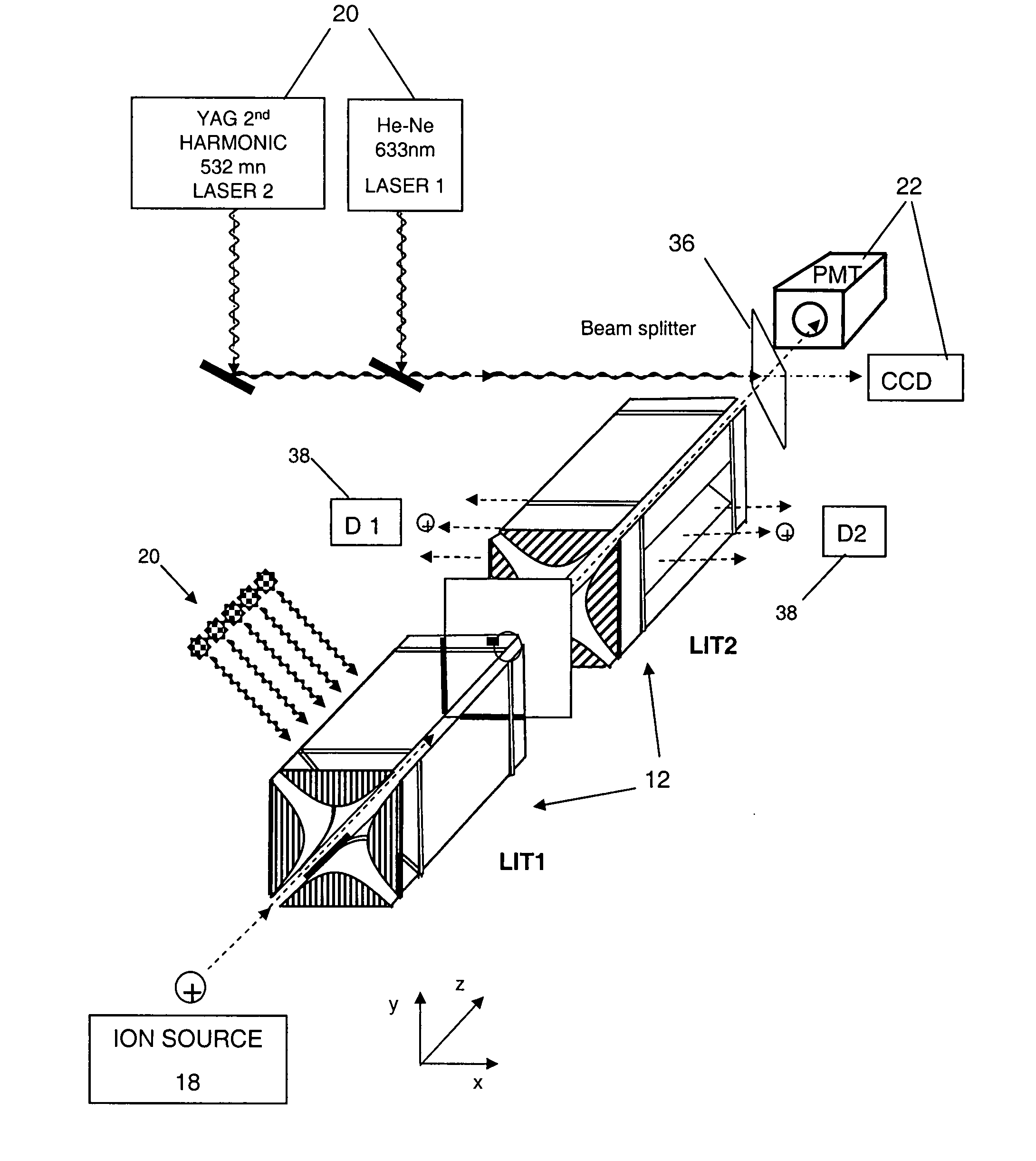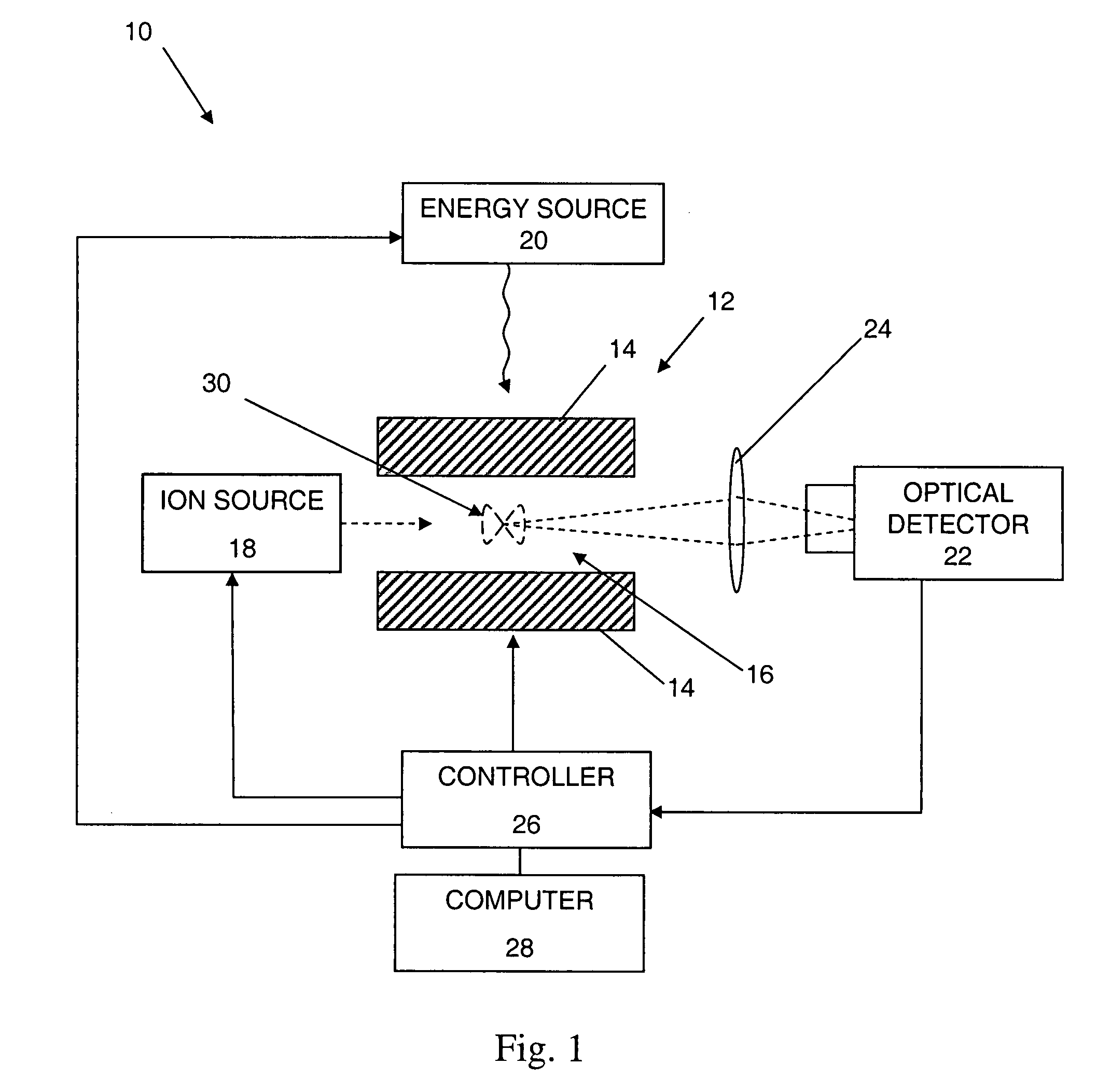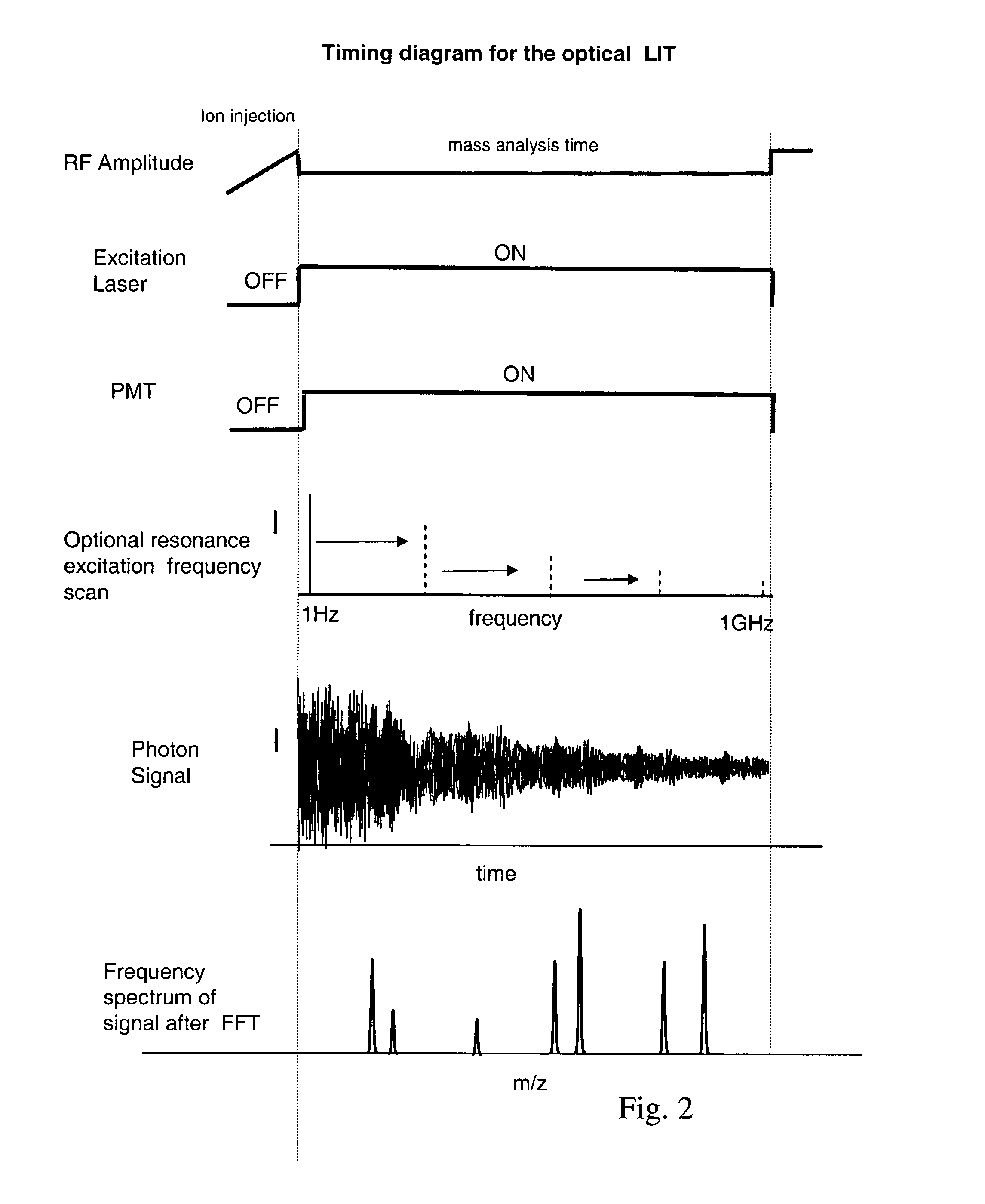Method and apparatus for an improved mass spectrometer
a mass spectrometer and mass spectrometer technology, applied in the direction of dispersed particle separation, instruments, separation processes, etc., can solve the problem that macromolecular ions do not give a strong signal response from conventional ionizing detectors, and achieve the effects of improving mass accuracy, detection limits and sensitivity, and improving resolution
- Summary
- Abstract
- Description
- Claims
- Application Information
AI Technical Summary
Benefits of technology
Problems solved by technology
Method used
Image
Examples
Embodiment Construction
Optical Trap
[0062]FIG. 1 illustrates one embodiment of an apparatus 10 according to the present invention. The apparatus 10 includes an ion trap 12, a plurality of electrodes 14 defining a trapping chamber 16, an ion source 18, an energy source 20, an optical detector 22, a controller 26, and a computer 28. Ions from the ion source 18 are injected into the ion trap 12, where they are trapped or contained. The energy source 20 excites the ions in the ion trap 12 and the optical detector 22 detects photons emitted from the ions in the trap 12. This embodiment also illustrates exemplary trajectories 30 of ions within the trapping chamber 16.
[0063]The ion trap 12 will generally be described as a linear ion trap (“LIT”), although the present invention may be used with other forms of ion traps and is not limited to the specific embodiments described herein. For example, the ion trap 12 may be other forms of ion traps such as, for example, a three-dimensional or two-dimensional quadrupole ...
PUM
 Login to View More
Login to View More Abstract
Description
Claims
Application Information
 Login to View More
Login to View More - R&D
- Intellectual Property
- Life Sciences
- Materials
- Tech Scout
- Unparalleled Data Quality
- Higher Quality Content
- 60% Fewer Hallucinations
Browse by: Latest US Patents, China's latest patents, Technical Efficacy Thesaurus, Application Domain, Technology Topic, Popular Technical Reports.
© 2025 PatSnap. All rights reserved.Legal|Privacy policy|Modern Slavery Act Transparency Statement|Sitemap|About US| Contact US: help@patsnap.com



